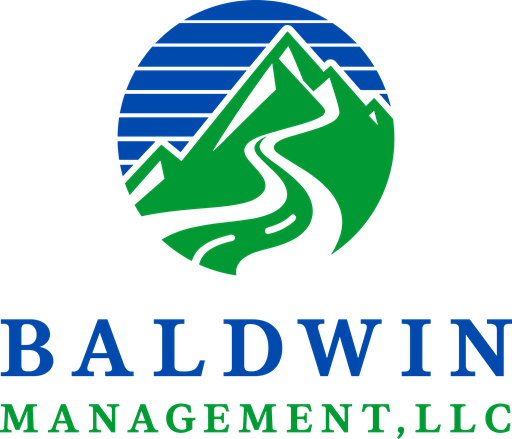When running a small business, managing cashflow is just like monitoring the heartbeat of a patient in a hospital. Just as doctors rely on vital signs to assess health, business owners must keep a close watch on cashflow to ensure their enterprise stays alive and thriving. Here’s a quick guide to beginning to understand and manage cashflow effectively.
1. Understand the Basics: Inflows and Outflows
Cashflow is essentially the movement of money in and out of your business. It is natural for the balances of cash and bank accounts to fluctuate, which is why this is called cash-“flow” and not cash-“growth” or cash-“shrink”. Inflows are the money coming in from sales, loans, or investments, while outflows are the money going out to cover expenses like rent, salaries, and supplies. The goal? Keep your inflows consistently higher than your outflows. Simple, right? Well, not always.
2. Manage the Timing: it is Everything
Just like a comedian’s punchline, timing in cashflow is crucial. Even if you have a healthy amount of money coming in, if it doesn’t align with when your bills are due, you could find yourself in hot water. This is where cashflow forecasting comes in handy. By predicting when money will flow in and out, you can plan to ensure you always have enough cash on hand. To manage the timing of money coming in, invoices should be generated as quickly as possible with clearly defined payment terms. To manage the timing of money going out, fixed payments (like loan payments, rent, and utilities) need to be considered, along with having an efficient method to record the amounts of bills and their due dates.
3. Understand the Intermediates: Net Profit ≠ Cash Balance
Depending on your accounting processes and systems, your financial reporting can give you great insight into your operational performance, but it can also lead to misinterpretations. If a small business owner spends too much time analyzing profitability, cash can inadvertently slip away. The bottom line of a profit report is not the same as the balances of the bank accounts. There are many ways and reasons for cash to leave a business that are not expenses. Just because a business is profitable, it does not mean that business is flush with cash.
4. Manage the Cashflow Crunch
Every small business owner dreads the “cashflow crunch,” that dreaded moment when there are more days left in the month than money. There are two important places to concentrate to avoid this. Number one is accounts receivable. It can lead to tough conversations, but it is paramount to collect money on time and to address any payment issues with customers as quickly as possible. Number two is accounts payable. It is important to pay vendors in a timely fashion, but there are ways to keep from overburdening yourself. Extended payment terms, lines of credit, and corporate credit card accounts are strategic tools to take advantage of to keep cash accounts afloat.
5. Save for Rainy Days
For thousands of years, human beings have extolled the virtue of saving resources in good times to prepare for bad times. Aim to have enough cash set aside to cover at least three to six months of fixed expenses and payments. This will help you to weather unexpected storms like a slow sales month or a surprise expense. This advice can be easier heard than enacted, but even a small reserve is a great place to start. A common way to build these reserves is to set aside a separate bank account that receives a small portion of all net income deposited whenever a payment is received.
6. Watch Your Margins
Profit margins are a critical component of cashflow. If your margins are too thin, even a slight dip in sales can leave you scrambling. Regularly review your pricing and costs to ensure you’re maintaining healthy margins. Depending on industry and production, job costing and budgeting can be analyzed at a variety of levels. It can be too easy to discount your way out of business if it starts costing more than what is earned being productive.
7. Leverage Technology
In today’s digital age, there’s no excuse for not using technology to manage cashflow. Tools like cloud accounting software can automate invoicing, track expenses, and provide real-time insights into your cash position. Automation not only saves time but also reduces the risk of human error. Today’s technology has also ensured that it has never been easier to get help, as needed. There are many places to find remote full- or part-time human resources to assist in ways to increase production, conduct the collection process, or even manage expenses.
8. Know When to Seek Help
Managing cashflow can sometimes feel like juggling flaming torches while riding a unicycle. If it starts to feel overwhelming, don’t hesitate to seek help. The team at Baldwin Management, acting as your advisor and accountant, can provide valuable insights, along with a network of tools and resources, and help you to develop strategies to keep your cashflow steady and strong.
9. Stay Proactive, Not Reactive
The best way to manage cashflow is to be proactive rather than reactive. Regularly review your financial statements, adjust your forecasts as needed, and always have a plan in place for the unexpected. Remember, it’s easier to prevent a cashflow problem than to fix one.
Benjamin Meck, CPA
Tax/Accounting Associate
Benjamin joined Baldwin Family Office in 2023 after spending 8 years gaining experience in corporate, cost, construction, and property accounting. He holds a B.S.B.A in both Accounting and Finance from Bloomsburg University of Pennsylvania. He earned the CPA designation in 2022. He is a member of the Pennsylvania Institute of Certified Public Accountants and the National Association of Tax Professionals.

